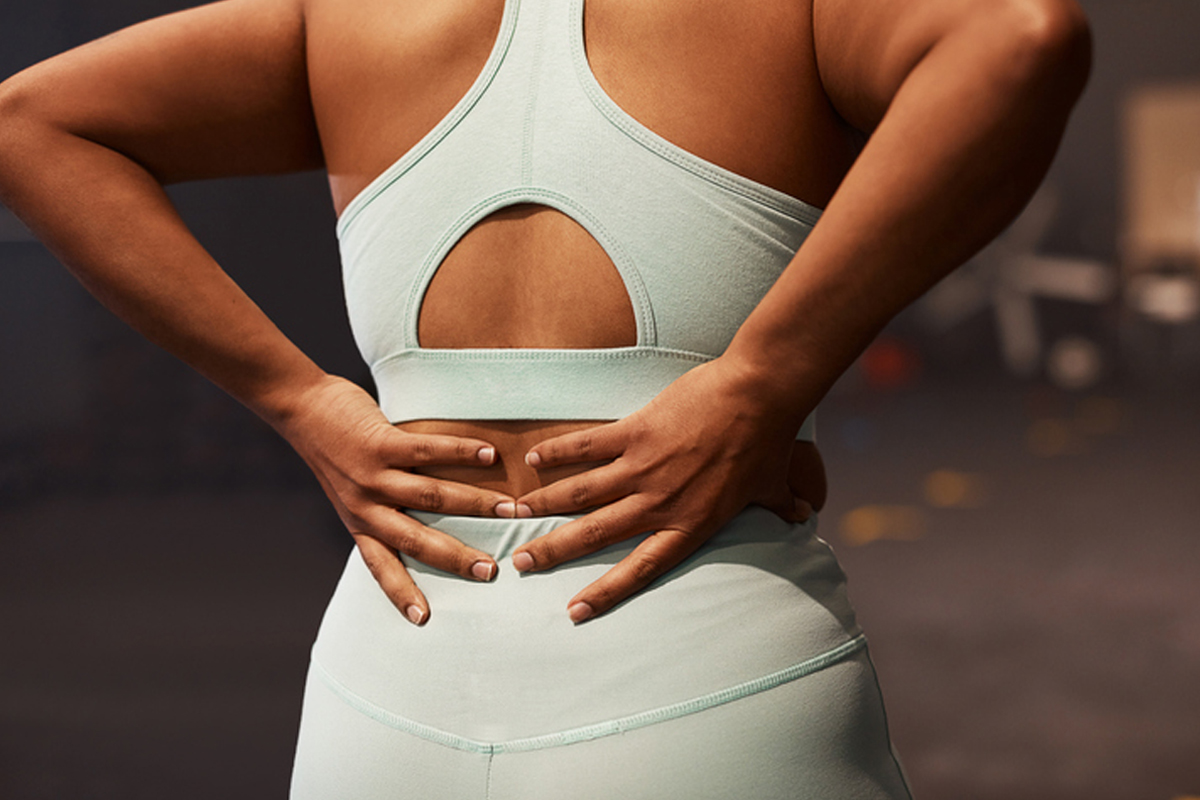Chances are, you pushed your muscles just a bit too far. Here’s what to know about delayed onset muscle soreness.

A little bit of soreness is an inevitable part of working out. But if you feel so wrecked after a Tonal session that you can’t fathom reaching for the Smart Handles the next day or even three days later, you might be suffering from DOMS.
DOMS is short for delayed onset muscle soreness, and it definitely feels different from “normal” a.k.a. acute soreness. “Typically, post-workout soreness feels like a tightness or ‘pumped’ sensation in the worked muscle area,” explains Evan Williams, a certified strength and conditioning specialist and CEO of E2G Performance.
Acute muscle soreness—that burning sensation you feel in your muscles—can also occur during a workout, in part due to the buildup of hydrogen ions (not lactic acid) in your blood, explains Todd Buckingham, Ph.D., an exercise physiologist at the Mary Free Bed Sports Rehabilitation Performance Lab.
“The body uses carbohydrates as fuel and the end product of carbohydrate metabolism is lactate, which has a hydrogen ion associated with it,” Buckingham explains. “That lactate is sent via the blood back to the liver, where it’s turned back into a carbohydrate then sent to the muscle and reused for fuel. But when exercise gets really intense, lactate—with its hydrogen ions—starts to build up in the blood because our body can’t convert it back to carbohydrates as quickly as it’s being produced, which leads to that burning sensation.” Fortunately, that pain in your muscles disappears if you decrease the intensity of your workout or stop entirely.
DOMS, on the other hand, typically starts at least 12 to 24 hours after a workout, according to the American College of Sports Medicine, and peaks after 24 to 72 hours. Instead of a little tightness, you might feel more of “a throbbing, achy pain in the muscle area,” says Williams, “and you may feel uncomfortable or stiff when trying to lengthen the muscle.”
This kind of soreness is usually the result of a muscle being stretched past its limits with repeated contractions against a load, says Buckingham. “This causes micro-injuries to not just the muscle tissue, but also to these special sensory organs that dampen pain signals sent from the muscle to the brain,” he explains. “When those become severely damaged, they open the gate and allow those pain signals to be sent to the brain.” Inflammation and edema brought on by muscle tissue damage can also push on pain-detecting nerve fibers, which could prevent the contraction and relaxation of the muscle in a way that causes stiffness and pain, he adds.
Soreness and even swelling are normal processes the body uses to repair trauma, says Williams; when a muscle is repaired completely, it adapts to the previous stress applied to it and becomes stronger in the process. When you’re experiencing DOMS, it means your body needs a little longer to recover.
And that’s the rub with DOMS—if you’re already suffering from it, there’s no shortcut to getting back to making gains. It’s like a hangover for your muscles; time is the only solution. “Sufficient recovery is necessary to ensure those muscles are not still experiencing neuromuscular damage,” says Buckingham.
That doesn’t mean you can’t do anything. In fact, the last thing you want to do is sit around. “This will prolong muscle soreness and sometimes make the tightness feel even more intense,” says William. Instead, move the muscle and joint through its full range of motion to increase blood flow to the area—that will help the healing process. Light stretching or gentle yoga are two great options. If you do want a more intense workout, do one that targets the muscles that aren’t experiencing DOMS, says Buckingham. For example, if your legs are crushed, try an upper body workout that allows your lower body to recover.
You can also swipe a menthol-based topical analgesic on the affected muscles; that was shown to reduce pain within 45 minutes in a 2019 study published in the journal Medicine & Science in Sports & Exercise. Dunking your body in cold water—between 50° and 59°F—for 10 to 15 minutes was shown to lessen the intensity of DOMS as well, according to a 2016 review of scientific literature published in Sports Medicine.
Those quick fixes might help ease the pain, but you’re better off trying to prevent DOMS from occurring at all. After a tough workout, taking a hot bath can reduce the likelihood of any delayed soreness, according to a study in the Clinical Journal of Sport Medicine found. A massage 48 hours after exercise can keep your muscles from complaining, too, a 2017 scientific review published in Frontiers in Physiology found. That stands true even for DIY massage: Using a percussive device like a Theragun can be just as effective in preventing DOMS, according to 2014 research published in the Journal of Clinical and Diagnostic Research.
Most importantly, listen to your body. The whole “no pain, no gain” mentality is as passé as using exercise to justify eating a cookie. You know better than anyone what normal soreness is for you, so if that last interval or rep isn’t feeling good, don’t push yourself past your limits.
The information provided in this article is for educational and informational purposes only. Individuals with pre-existing health conditions, injuries, or concerns should consult with their healthcare provider before trying a new exercise or nutrition regimen.


